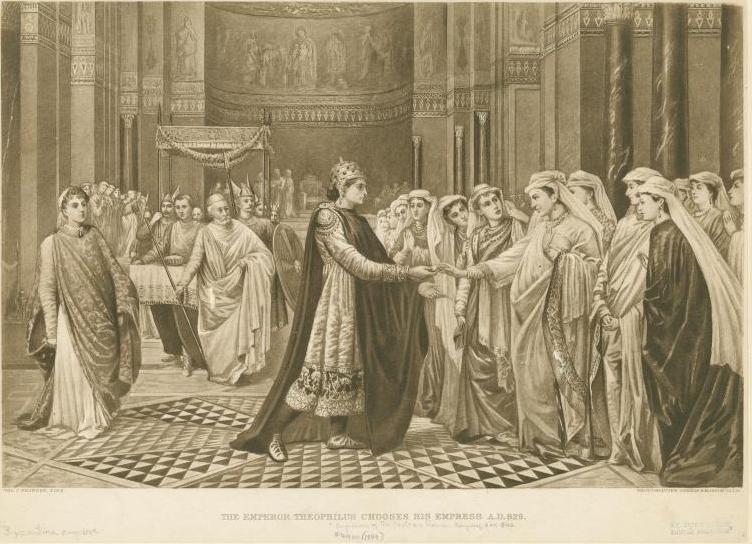bride-show on:
[Wikipedia]
[Google]
[Amazon]
 The bride-show ( el, δείχνουν οι νύμφες, russian: смотр невест) was a custom of
The bride-show ( el, δείχνουν οι νύμφες, russian: смотр невест) was a custom of
 The bride-show ( el, δείχνουν οι νύμφες, russian: смотр невест) was a custom of
The bride-show ( el, δείχνουν οι νύμφες, russian: смотр невест) was a custom of Byzantine emperor
This is a list of the Byzantine emperors from the foundation of Constantinople in 330 AD, which marks the conventional start of the Eastern Roman Empire, to its fall to the Ottoman Empire in 1453 AD. Only the emperors who were recognized as ...
s and Russian tsar
Tsar ( or ), also spelled ''czar'', ''tzar'', or ''csar'', is a title used by East and South Slavic monarchs. The term is derived from the Latin word ''caesar'', which was intended to mean "emperor" in the European medieval sense of the ter ...
s to choose a wife from among the most beautiful maidens of the country. A similar practice also existed in Imperial China.
See also
*Beauty pageant
A beauty pageant is a competition that has traditionally focused on judging and ranking the physical attributes of the contestants. Pageants have now evolved to include inner beauty, with criteria covering judging of personality, intelligence, ...
*Book of Esther
The Book of Esther ( he, מְגִלַּת אֶסְתֵּר, Megillat Esther), also known in Hebrew as "the Scroll" ("the Megillah"), is a book in the third section (, "Writings") of the Jewish '' Tanakh'' (the Hebrew Bible). It is one of the ...
References
Further reading
{{commons category, The Bride-show *Afinogenov, D. "The Bride-show of Theophilos: Some notes on the Sources", ''Eranos'' 95. 1997, pp. 10–18. *Rydén, Lennart. "The Bride-shows at the Byzantine Court - History or Fiction?" ''Eranos'' 83, 1985, pp. 175–191. *Treadgold, W. T., "The Bride-shows of the Byzantine Emperors", ''Byzantion'' 49. 1979, pp. 395–413. * Bourboulis, Photeine, “The Bride-Show Custom and the Fairy-Story of Cinderella.” In P. P. Bourboulis, ''Studies in the History of Modern Greek Story-Motives''. Thessalonike, 1953. Pp. 40–52. Marriage Wedding Tsardom of Russia Byzantine culture Chinese culture Russian culture